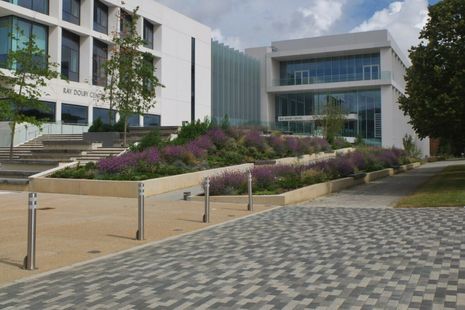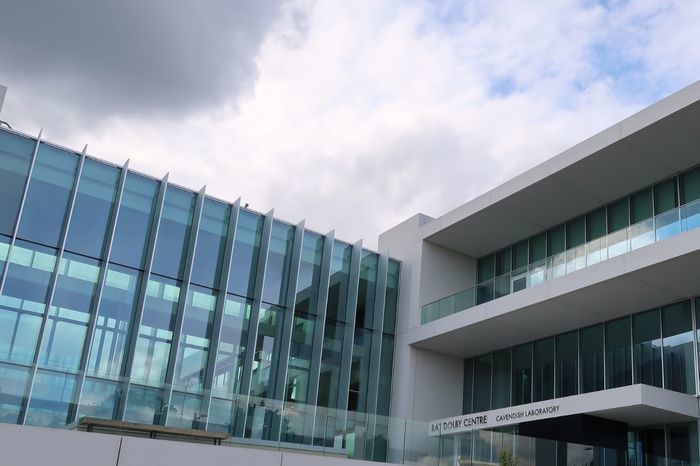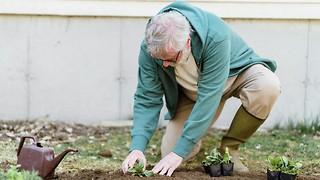Uni unveils new Physics faculty building
New Physics building worth £303 million opened in bid to expand West Cambridge Innovation District

The University of Cambridge has opened the Ray Dolby Centre, a centre for physics research and teaching, replacing the previous facilities at Cambridge West Innovation District.
The centre will be the “new home of the Cavendish Laboratory”.
The five-storey building houses new laboratories, workshops, teaching spaces, a learning resources centre, and a 400-seat lecture theatre. It also houses various support and administration venues, such as offices, outreach and exhibition spaces, and a central cafe.
Designed by Jestico + Whiles, the centre takes its name from alumnus Ray Dolby, the pioneer of the surround-sound system. The Ray Dolby Foundation donated £85m to facilitate the project, and the government donated an extra £75m to ensure that the building will function as a national resource for scientists from across the UK.
The Cavendish Laboratory has been associated with 31 Nobel laureates. The building has been a centre for global scientific research since 1874, and played a key role in the discovery of the electron and the structure of DNA.
Members of the new faculty are already developing solar panels capable of powering satellites, smart toilets to analyse urine samples, and are researching the use of light to improve endoscopic tests for oesophageal cancer, according to the BBC.
The Ray Dolby Centre, delivered by Bouygues UK in partnership with executive design partners NBBJ and BDP, is a central aspect of the University’s planned expansion in the Cambridge West Innovation District to create a research-led hub to encourage links between industry and academia.
Graham Matthews, director of estates at the University of Cambridge, said: “The Ray Dolby Centre is truly a landmark building. The official opening marks the culmination of many years of hard work by teams from across the division to move this project through its phases from concept to completion and operation.”
Phillippe Bernard, Chair and CEO of Bouygues UK, stated that the project “demanded the highest level of technical expertise and precision,” adding that the centre is “a testament to the dedication and skill of everyone involved”.
The site includes 173 laboratories with specialised analytical equipment. The basement houses vibration-sensitive microscopy suites, whilst other spaces require temperature and humidity control, electromagnetic shielding and non-ferrous or anti-static conditions.
The building also provides informal outdoor gathering spaces through a south-facing garden, an elevated piazza, and three rain gardens. Six internal courtyards provide publicly accessible spaces, which are joined by connecting pathways between facilities.
 News / Cambridge students accused of ‘gleeful’ racist hate crime4 December 2025
News / Cambridge students accused of ‘gleeful’ racist hate crime4 December 2025 News / Churchill announces June Event in place of May Ball3 December 2025
News / Churchill announces June Event in place of May Ball3 December 2025 News / Cambridge cosies up to Reform UK30 November 2025
News / Cambridge cosies up to Reform UK30 November 2025 Comment / Don’t get lost in the Bermuda Triangle of job hunting 24 November 2025
Comment / Don’t get lost in the Bermuda Triangle of job hunting 24 November 2025 News / Uni redundancy consultation ‘falls short of legal duties’, unions say6 December 2025
News / Uni redundancy consultation ‘falls short of legal duties’, unions say6 December 2025









